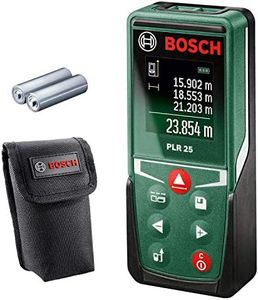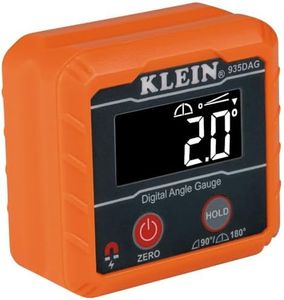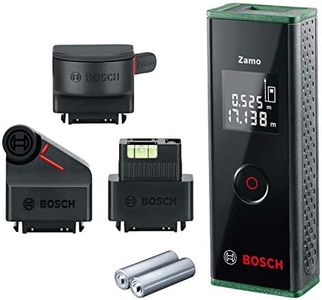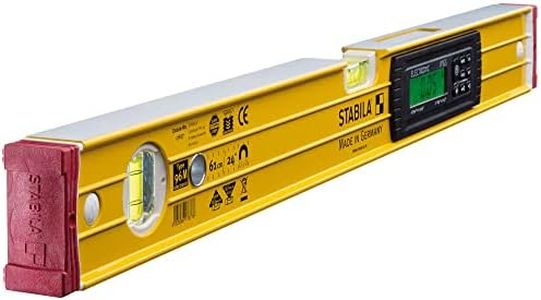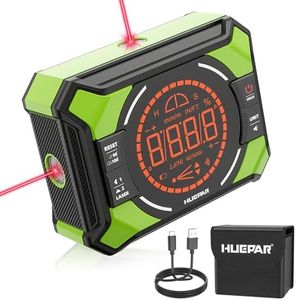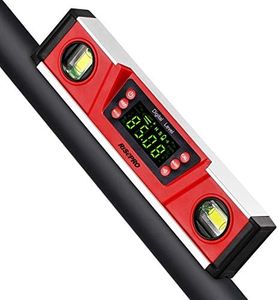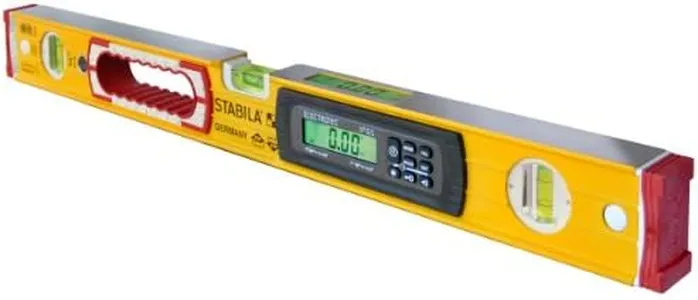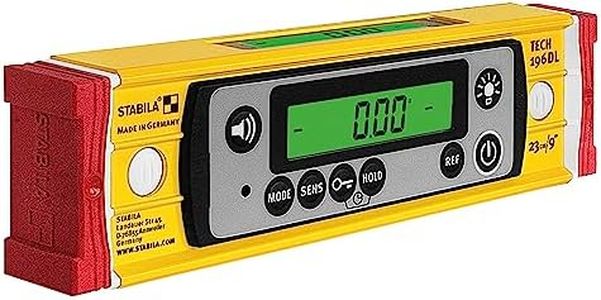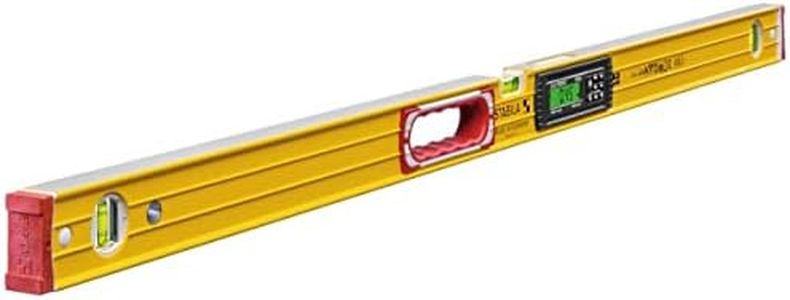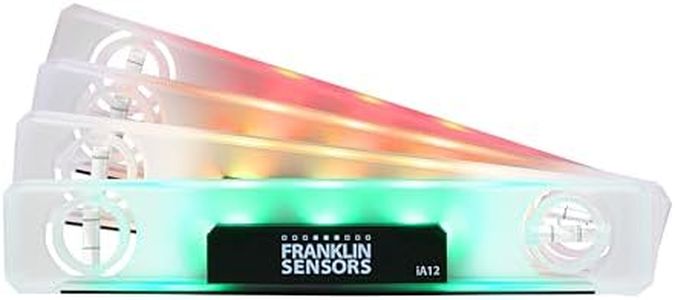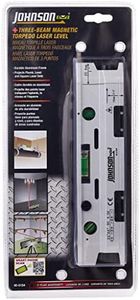We Use CookiesWe use cookies to enhance the security, performance,
functionality and for analytical and promotional activities. By continuing to browse this site you
are agreeing to our privacy policy
10 Best Digital Levels
From leading brands and best sellers available on the web.Buying Guide for the Best Digital Levels
Digital levels are handy tools for measuring angles, slope, or how level a surface is, with electronic readouts that give you precise and easy-to-read measurements. Choosing the right digital level means thinking about where and how you'll use it—whether it's for DIY around the house, on construction sites, or for specialized work like carpentry. Focus on specs that tell you how reliable and easy to use the tool will be in your environment.Measurement AccuracyMeasurement accuracy tells you how close the level’s readings are to the true angle or level. For most work, better accuracy means more reliable measurements—important for professional or detailed jobs, while basic tasks may not need such tight tolerances. Accuracy is usually shown in degrees or millimeters per meter; high-precision levels offer readings like ±0.05° while basic ones might be around ±0.2°. Think about how critical precise readings are for your tasks—if you need perfectly flat surfaces or precise angles, choose a higher accuracy; for casual use, mid-range accuracy may be fine.
Readout ResolutionReadout resolution is how finely the digital level can display its measurements. This is typically shown in decimals (like 0.1° or 0.01°). Higher resolution gives more detailed readings but isn't always necessary if you’re just checking if something is roughly level. For high-detail work or when sharing results with others, a finer resolution is helpful. Choose a resolution that matches how exact you need your work to be—less precise for general use, more precise for technical or finishing work.
Display Type and VisibilityThe display type and how well you can read it matters, especially if you'll work outdoors, in bright sunlight, or in dim conditions. Some digital levels have backlit screens for low light, while others use high-contrast displays for daylight use. Consider if you'll often be in tricky lighting situations—if so, prioritize screens that are easy to read at a glance, with backlighting or strong contrast.
Length of the LevelThe length refers to how long the level is; common sizes range from 6 inches to over 4 feet. Short levels are more portable and good for tight spaces, while longer levels give more accurate results over big surfaces, making them ideal for jobs like framing or installing countertops. Think about where you’ll use the level most—a smaller one for home use or tight areas, a longer one for construction or larger projects.
Power Source and Battery LifeDigital levels need power, usually from batteries. Some run on standard AA or AAA batteries, while others use rechargeable cells. Battery life can determine how much maintenance the level needs—longer life is less hassle, especially for busy or remote jobsites. If you use the level frequently or for long periods, go with models known for good battery life, or with easy-to-change batteries. For infrequent use, almost any type will do, but you should still check how easy it is to replace or recharge.
Additional Features (Hold, Calibration, Alerts)Extra features like hold functions (to freeze the reading), easy calibration (to keep the level accurate over time), or audio/visual alerts (which beep or flash when level is achieved) help make the tool easier to use and more flexible. If you want a tool that gives you more guidance or is easier to use in awkward spots, look for these features. These aren’t essential for everyone, but they do improve ease of use and can help complete jobs more efficiently, especially in challenging situations.
Durability and Water ResistanceDurability describes how well the digital level holds up to drops, knocks, and the general dirt or moisture of a worksite. Water and dust resistance are typically labeled as IP ratings—higher numbers mean better protection. If you’ll be working outdoors, in messy environments, or need the tool to last, consider a model with rugged construction and decent water resistance; for indoor or lighter use, standard models are generally fine.

